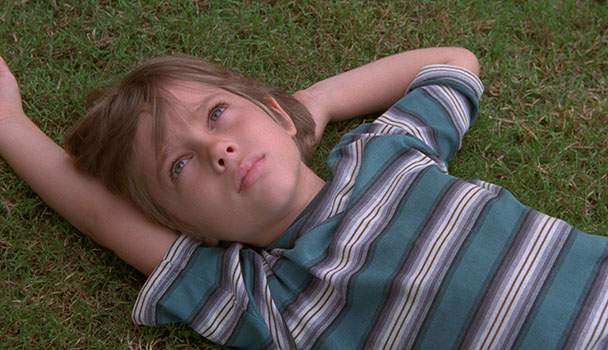Boyhood
Shot over 12 years at regular intervals, Boyhood does more than present coming-of-age cliches.
Overview
Chronicling encroaching maturity: it's the ambit of so many coming-of-age features that the idea has become its own cliché. With Boyhood, writer/director Richard Linklater takes the concept a step further – and though his method isn't unique, even to his own work courtesy of his Before trilogy, the film that results is. His portrait of growing up charts twelve years, shooting over the same period.
Mason (Ellar Coltrane) is introduced staring at the sky, a six-year-old bundle of daydream-fuelled introversion and mischievous curiosity. He gets older, sparring with his older sister Samantha (Lorelai Linklater), traversing the life dictated by his mother's (Patricia Arquette) choices, and wishing for more time with his father (Ethan Hawke). The years pass, and over the movie's 165 minutes, Mason evolves from a child into a man.
Most movies mark the process of becoming an adult through major milestones; however Boyhood reflects upon quieter moments. Linklater doesn't follow an overarching narrative, apart from Mason's aging and his mother's romantic and career changes. The big developments are largely inconsequential, excised in favour of everyday ephemera. It is in the spaces between – as Mason tests boundaries and forms his own identity, whether playing in the park, camping with his dad, passing notes with a pretty girl, having his first drink or finding an affinity for photography – that the film lingers.
That's the key to Boyhood – the minutiae of getting older, by virtue of avoiding the usual contrivances of impending adulthood, always feels authentic and relatable. Mason's tale isn't just his own, but belongs to everyone who was once a child navigating difficulties mundane in their ordinariness but influential in their individual impact, whether recently or remembered in a wave of nostalgia.
In keeping with his layered storytelling, Linklater's filmmaking is unobtrusive, stitching together the familiar with finesse – pop culture references and all. His camera is enamoured with Mason, and though divorcing the time-conscious technique from the story is impossible, every image does more than capture a character ambling towards the age of 18. The intimate and unembellished slices of a young life each visual offers appear aesthetically and narratively drawn from reality, even as the constructed nature of the film remains apparent.
Coltrane, of course, is the centerpiece of Boyhood, the figure upon which everything hangs. Calling his performance naturalistic states the obvious, but his ability to convey Mason's blossoming into a smart, sensitive young adult cements the film as truly special. Linklater took a risk on an ambitious way to relate an oft-told tale, and in his newcomer lead and career-best turns from Arquette and Hawke, he succeeds. And, then there's another feat that cannot be overlooked – starting a film with Coldplay's Yellow, and still making a masterpiece.





